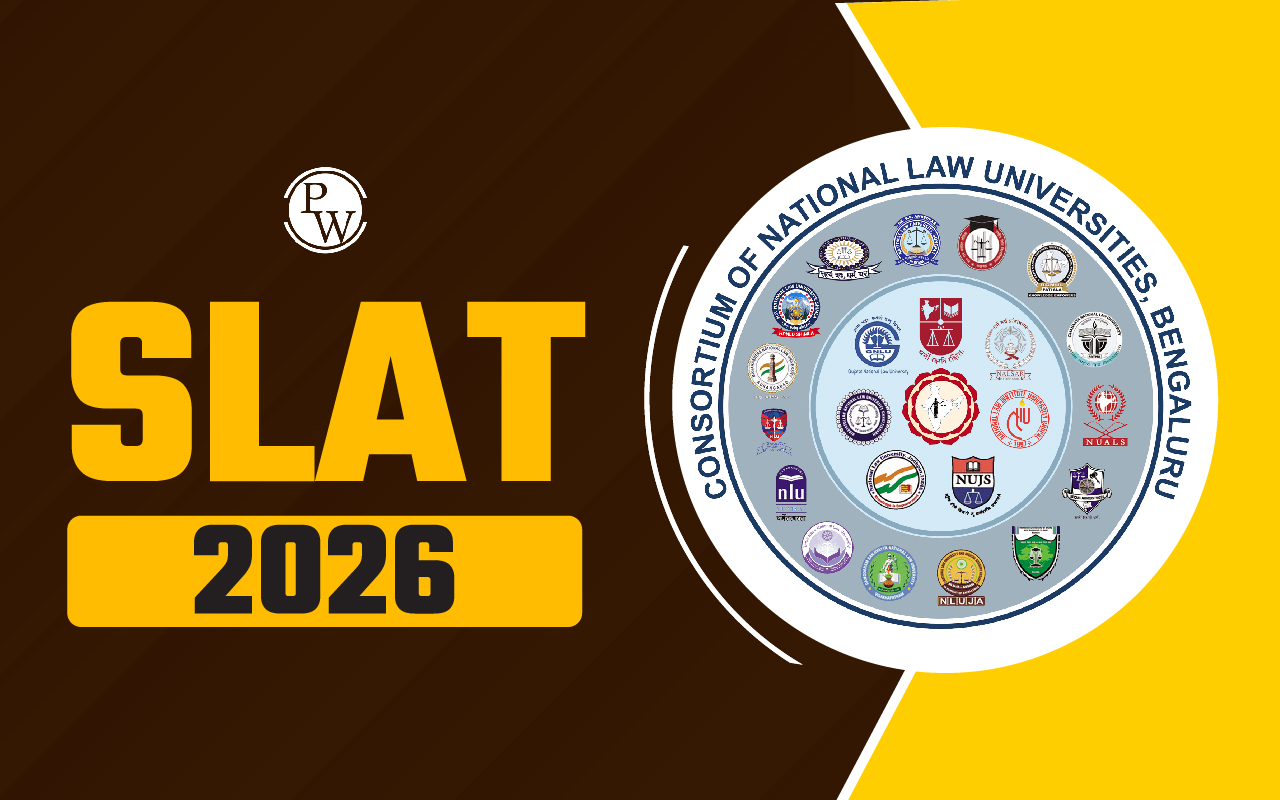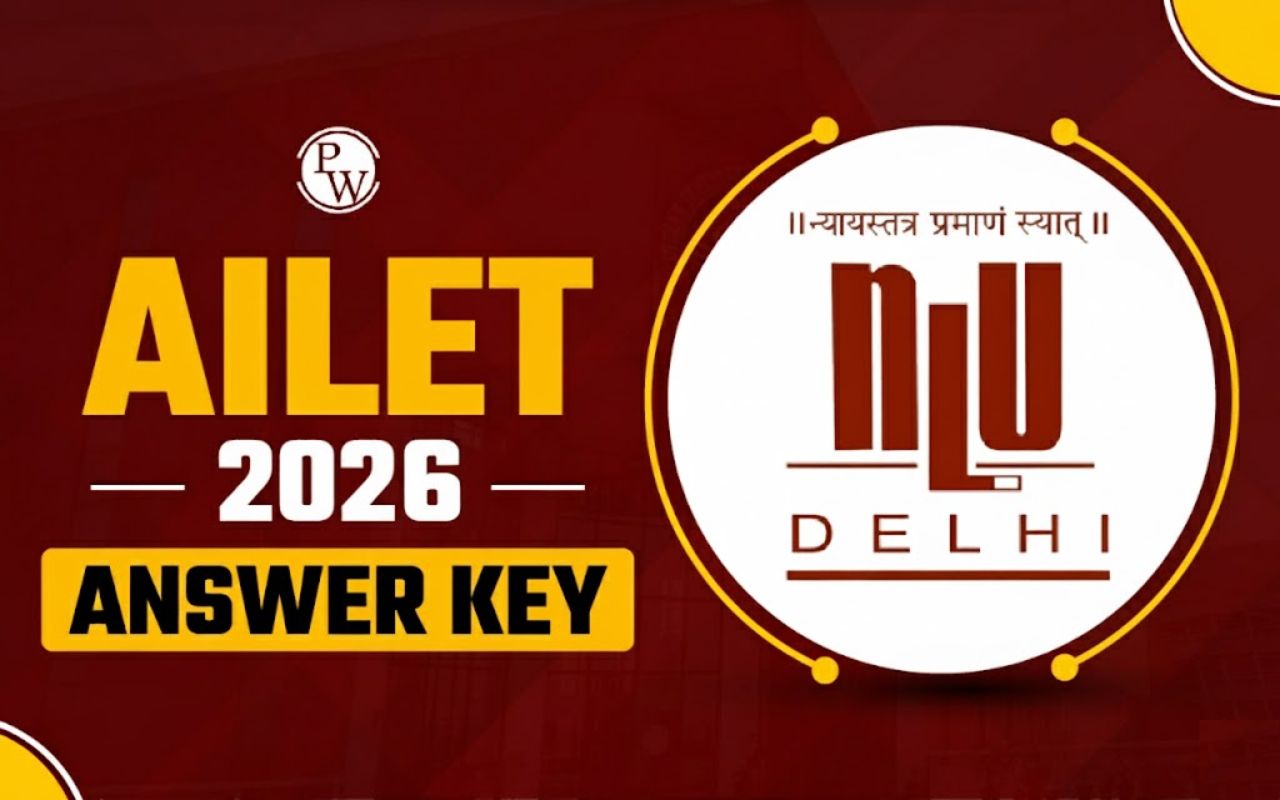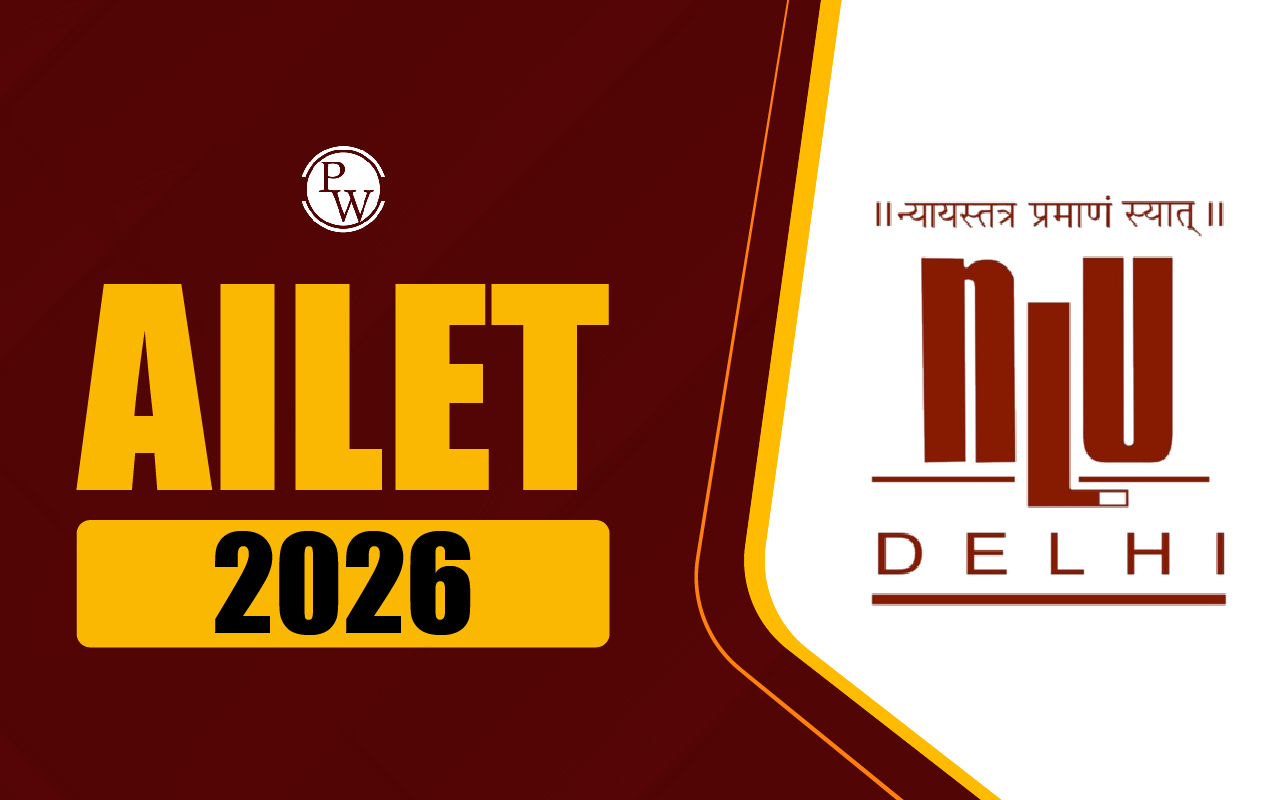What is the CLAT Exam?
The Common Law Admission Test (CLAT) is a national-level entrance exam conducted annually for admission to undergraduate (BA LLB, BBA LLB, etc.) and postgraduate (LLM) law programs offered by 25 National Law Universities (NLUs) in India, excluding NLU Delhi and NLU Meghalaya. Established in 2008, CLAT is also accepted by several private law schools and public sector undertakings for recruitment.
It's a pen-and-paper test where you answer questions on English, Current Affairs, GK, Legal Reasoning, Logical Reasoning, and Quantitative Mathematics for UG. For PG, it covers subjects like Constitutional Law, Jurisprudence, Torts, IPC, CrPC, CPC, Family Law, and IPR. The CLAT 2025 is scheduled for 1st December 2024.
NLUs use CLAT scores for admissions. Besides NLUs, 61 private colleges accept CLAT scores. Also, some organizations like ONGC and BHEL consider CLAT-PG scores for recruitment.
CLAT Registration Window 2025 Closed
The CLAT 2025 registration window closed on October 22, 2024 , at 11:59 PM. Candidates who initiated their registration but have not made the payment can still do so until October 25, 2024 . After this date, no further registrations or fee payments will be accepted.
CLAT Exam Date 2025 Announced
The CLAT 2025 exam date has been officially announced following a meeting on April 26, 2024. The exam will be held on December 1, 2024 , from 2:00 PM to 4:00 PM . Candidates are advised to mark the date and prepare accordingly. Further updates and instructions will be provided on the official CLAT website.
Read More: CLAT Registration 2025
CLAT 2025 Committee Formed
The Consortium announced the formation of a new CLAT 2025 committee on 18th February 2024. CLAT 2025 will be led by MNLU Mumbai Vice Chancellor Dilip Uikey. Contrary to this, Prof. S. Shantha Kumar, Director of GNLU, has been chosen to serve as Vice-President of the CLAT Consortium, and V.C. Vivekanandan, Vice-Chancellor of HNLU, will preside over CLAT 2025.
CLAT 2025 Exam Overview
The table below provides a comprehensive overview of the CLAT 2025 exam, including essential details such as the exam name, conducting authority, purpose, participating colleges, and available seats. This information is crucial for candidates preparing for the Common Law Admission Test, as it outlines the key aspects of the exam and the opportunities it presents.
|
CLAT 2025 Exam Overview
|
|
Exam Name
|
Common Law Admission Test (CLAT)
|
|
Conducting Authority
|
Consortium of National Law Universities (CNLU)
|
|
Purpose
|
Admission to 5-year LLB and LLM programs
|
|
Selection for Indian Army
|
|
Recruitment in Public Sector Undertakings (PSUs)
|
|
Participating Colleges
|
25 National Law Universities (NLUs)
|
|
60+ Affiliated Colleges
|
|
Seats Offered
|
5-year LLB: 3,400+
|
|
LLM: 1,200+
|
Read More: Is CLAT Tough? A Comprehensive Analysis and Expert Opinions
CLAT 2025 Exam Dates
The table below outlines the key events and important dates for the CLAT 2025 examination. This information is essential for candidates to keep track of the application process, exam schedule, and result announcements. Make sure to mark these dates to ensure a smooth application and examination experience.
|
CLAT 2025 Exam Dates
|
|
Events
|
Important Dates
|
|
CLAT 2025 Application Begins From
|
15th July 2024
|
|
Last Date to Apply
|
22th October 2024
|
|
Application Form Correction Window
|
25th October 2025
|
|
CLAT 2025 Admit Card Release Date
|
15 Nov 2024 10:30 AM
|
|
CLAT 2025 Exam Date
|
1st December 2024 (Sunday, 2 pm to 4 pm)
|
|
CLAT 2025 Answer Key
|
December 2024 (Tentative)
|
|
Result Declaration
|
Second Week of December 2024 (Tentative)
|
What is CLAT Eligibility Criteria 2025?
Aspiring candidates intending to take the CLAT 2025 examination must adhere to the eligibility criteria established by the NLU Consortium. The admission requirements for NLUs align closely with the CLAT eligibility criteria 2025. The eligibility criteria for CLAT 2025 are outlined below:
UG CLAT 2025 Eligibility
Aspiring candidates planning to take the CLAT 2025 examination must meet the eligibility criteria set by the NLU Consortium. These criteria are essential for securing admission into various National Law Universities (NLUs) across India. The requirements differ for undergraduate and postgraduate programs, as outlined in the table below:
|
UG CLAT 2025 Eligibility
|
|
Eligibility Criteria
|
UG CLAT 2025
|
|
Educational Qualifications
|
Completion of Class 12 from a recognized board
|
|
Minimum Marks Required
|
45% in Class 12 (40% for SC/ST candidates)
|
|
Age Limit
|
No age limit for candidates
|
Read More: CLAT Selection Process 2025
CLAT 2025 Registration
The registration for CLAT 2025 commenced from 15th of July 2024. Interested candidates can register online on the official consortium website - consortiumofnlus.ac.in. The registration fee is Rs. 3,500 for general candidates and Rs.3,000 for SC and ST candidates. Those in need of official CLAT previous year papers will incur an additional cost of Rs.500, apart from the application fee.
- Visit the official CLAT 2025 website.
- Click on the new registration link.
- Register using your email ID and mobile number.
- Fill out the application form with personal information, communication details, academic details, exam center preference, and NLU preference.
- Submit the CLAT application form and pay the registration fee.
Documents required for CLAT Application Form 2025
Before applying for the CLAT 2025, keep the following documents ready.
- A valid email ID and mobile number.
- Mark sheets and Certificates of Class 10th and 12th
- Identity And Address Proof such as Aadhar Card/PAN Card/Driving License/Voter ID, etc.
- Category Certificate (if applicable)
- Candidates applying as PwD or BPL candidates have to present relevant certificates issued by the competent authority.
Document Specifications for CLAT 2025
This table provides an overview of the essential documents required for candidates applying for the CLAT 2025 examination, including their respective size limits and formats. Make sure to prepare these documents accordingly to ensure a smooth application process.
|
Document Specifications for CLAT 2025
|
|
Documents
|
Image Size
|
Format
|
|
Signature
|
100 KB
|
jpg/jpeg
|
|
Photograph
|
500 KB
|
jpg/jpeg
|
|
State domicile certificate
|
2 MB
|
PDF
|
CLAT 2025 Syllabus and Exam Pattern
Candidates preparing for the CLAT exam must follow the official syllabus and pattern to meet the test requirements. The CLAT syllabus is broadly categorized into five sections, mirroring the structure of the CLAT 2025 question paper:
- English Language and Comprehension
- Legal Reasoning and Aptitude
- Elementary Mathematics
- Logical Reasoning
- Current Affairs and General Knowledge
Candidates are advised to focus on all sections, with Legal Reasoning and Current Affairs receiving the highest weightage.
|
CLAT 2025 Syllabus
|
|
Section
|
Questions
|
Marks
|
Weightage (%)
|
|
Current Affairs & General Knowledge
|
28-32
|
35-39
|
23.33 - 26
|
|
English Language
|
22-26
|
28-32
|
18.66 - 21.33
|
|
Logical Reasoning
|
22-26
|
28-32
|
18.66 - 21.33
|
|
Quantitative Techniques
|
10-14
|
13-17
|
8.66 - 11.33
|
|
Legal Reasoning
|
28-32
|
35-39
|
23.33 - 26
|
|
Total
|
120
|
120
|
100
|
CLAT 2025 Exam Pattern
The CLAT exam pattern for 2025 furnishes comprehensive details on the composition of the question paper, including its structure, time duration, and marking scheme. Prospective candidates are advised to acquaint themselves with the CLAT 2025 exam pattern to understand the rules and format of the test.
The table below outlines the key details of the CLAT 2025 exam pattern, including the format, duration, and marking scheme. Understanding this structure will help candidates prepare effectively for the examination.
|
CLAT Exam Pattern 2025
|
|
Category
|
Details
|
|
Time Duration
|
2 hours
|
|
Mode
|
Offline (pen paper-based)
|
|
Type of Questions
|
Objective-type questions
|
|
Number of Questions
|
120
|
|
Total Marks
|
120
|
|
Marking Scheme
|
Correct Answer: 1 mark, Incorrect Answer: 0.25 marks deduction, Unattempted Questions: No negative marking
|
|
Language
|
English
|
CLAT 2025 Question Paper Structure
The following table provides an overview of the question paper structure for the CLAT 2025 examination. It details the number of questions and their respective percentage contributions for each section of the paper.
|
CLAT 2025 Question Paper Structure
|
|
Section
|
Number of Questions
|
Percentage of Paper
|
|
English Language
|
22-26
|
20%
|
|
Current Affairs, including GK
|
28-32
|
25%
|
|
Legal Reasoning
|
28-32
|
25%
|
|
Logical Reasoning
|
22-26
|
20%
|
|
Quantitative Techniques
|
10-14
|
10%
|
How to Prepare for the CLAT 2025 Exam?
To excel in the CLAT 2025 exam, candidates must initiate early preparation. Given the competition and limited seats at prestigious NLUs, comprehensive CLAT preparation is essential to secure a favorable rank. As one of India's lengthiest law entrance exams, CLAT evaluates candidates' high-level reading, critical thinking, and analytical skills.
Also Check : CLAT 2025 Exam Centre Changed
Section-Wise Tips for CLAT 2025
Preparing for the CLAT 2025 requires a strategic approach to each section of the exam, as each tests different skills and knowledge areas. Understanding the nuances of the Legal Reasoning, English Language, Logical Reasoning, Maths, and General Knowledge sections is crucial for success. This guide provides targeted tips to help candidates enhance their preparation, maximize their strengths, and tackle each section effectively, ensuring a well-rounded approach to achieving a high score in the exam.
|
Section-Wise Tips for CLAT 2025
|
|
Section
|
Preparation Tips
|
|
CLAT Legal Reasoning
|
- Understand political science, the constitution, and laws. - Read legal journals, news articles, and editorials. - Review previous years' CLAT question papers.
|
|
CLAT English Language
|
- Strengthen grammar skills. - Practice comprehension from various sources. - Enhance reading speed with newspapers and journals. - Build a strong vocabulary.
|
|
CLAT Logical Reasoning
|
- Focus on critical thinking and problem-solving. - Regular practice is essential. - Start with foundational concepts before mock tests.
|
|
CLAT Maths
|
- Concentrate on basic math skills. - Regularly practice topics like algebra, profit and loss, and time and distance. - Remember this section accounts for 10%.
|
|
CLAT General Knowledge and Current Affairs
|
- Develop fast reading skills for efficient information absorption. - Use standard materials like Lucent for GK and reputable newspapers for current affairs. - Supplement with monthly magazines.
|
Read More: Quantitative Techniques Study Plan for CLAT 2025
CLAT Admit Card 2025
The CLAT Admit Card 2025 has been issued by the Consortium to the CLAT 2025 exam. Candidates can download the admit card from the official website until 1.30 p.m. on 1st December 2024. The CLAT Admit Card 2025 is an essential document to be carried on the exam day and during the counseling process. Along with the admit card, candidates must carry a valid ID proof on exam day.
To download the CLAT Admit Card 2025, candidates can follow the given steps.
- Refer to the official website of the CLAT 2025 exam.
- Enter the registered phone number and password in the login window.
- The CLAT Admit Card 2025 will be displayed on the screen.
- Cross-check the details mentioned on it and then download the CLAT 2025 admit car.
CLAT 2025 Answer Key Date
The CLAT 2025 answer key was released on December 2, 2024 on the official website at consortiumofnlus.ac.in., following the exam held on December 1, 2024. Candidates can access the provisional answer key on the official Consortium of National Law Universities (NLUs) website. Following the release of the provisional key, candidates had the opportunity to raise objections until December 3, 2024. The final answer key is expected to be published shortly after reviewing these objections, with results announced on December 9, 2024.
CLAT Result 2025
The CLAT 2025 results have been officially announced, providing candidates with their scores and qualifying status. Released on December 7, 2024, the results are accessible through the Consortium of National Law Universities' website, where candidates can log in to download their scorecards. Candidates must meet the cutoff to participate in counseling and seat allotment procedures. The CLAT Result 2025 or scorecard contains information such as the roll number of the candidate, name, AIR, qualifying status, total marks obtained, and cutoff marks.
CLAT Counseling 2025
The CLAT 2025 counseling process is set to commence in mid-April 2025, following the announcement of results. To participate in the CLAT Counseling 2025, eligible candidates have to register on the official website. The CLAT Counseling 2025 will be conducted in online mode on the official website of the Consortium of NLUs at consortiumofnlus.ac. Candidates who are allotted CLAT seats have the option to either accept, revise, or withdraw from the seat allotment process before the last date. Candidates who have accepted the allotted seat or applied for seat upgrades are required to pay the confirmation fee to hold the seat. The CLAT admission process will conclude with 5 rounds of counseling.
Read More: CLAT Statement & Conclusion Practice Questions & Answers
CLAT 2025 Participating Colleges
The scores obtained in CLAT 2025 will be recognized by 25 National Law Universities (NLUs). Notably, NLU Delhi and NLU Meghalaya operate independently of the CLAT framework. In addition to the NLUs, more than 60 private law schools also acknowledge CLAT scores for admissions. Eligible candidates can apply for admission to any of these institutions based on their CLAT scores, meeting the specific eligibility criteria and admission cut-offs. Below is the list of NLUs participating in the CLAT 2025 examination.
CLAT NLUs 2025
The following table outlines the key details for the National Law Universities (NLUs) participating in CLAT 2025, including the total seats available and the state quota allocations based on domicile and category. This information is essential for aspiring candidates to understand their chances of admission in these prestigious institutions.
|
CLAT NLUs 2025
|
|
NLU
|
CLAT Seats
|
State Quota (Domicile and Category)
|
|
National Law School of India University, Bangalore
|
240
|
25%
|
|
National Academy of Legal Studies and Research, Hyderabad
|
147
|
25%
|
|
National Law Institute University, Bhopal
|
125
|
50%
|
|
West Bengal National University of Judicial Sciences, Kolkata
|
132
|
36%
|
|
National Law University, Jodhpur
|
120
|
27.5%
|
|
Hidayatullah National Law University, Raipur
|
180
|
50%
|
|
Gujarat National Law University, Gandhinagar
|
172
|
25%
|
|
Ram Manohar Lohiya National Law University, Lucknow
|
176
|
52%
|
|
Rajiv Gandhi National Law University, Patiala
|
180
|
10%
|
|
Chanakya National Law University, Patna
|
138
|
66%
|
|
National University of Advanced Legal Studies, Kochi
|
60
|
51%
|
|
National Law University Odisha, Cuttack
|
180
|
25%
|
|
National University of Study and Research in Law, Ranchi
|
120
|
50%
|
|
National Law University and Judicial Academy, Guwahati
|
60
|
48%
|
|
Damodaram Sanjivayya National Law University, Visakhapatnam
|
120
|
40%
|
|
Tamil Nadu National Law School, Trichy
|
120
|
50%
|
|
Maharashtra National Law University, Mumbai
|
100
|
63%
|
|
Maharashtra National Law University, Nagpur
|
120
|
62%
|
|
Maharashtra National Law University, Aurangabad
|
120
|
62%
|
|
Himachal Pradesh National Law University, Shimla
|
180
|
25%
|
|
Dharmashastra National Law University, Jabalpur (MPDNLU)
|
120
|
40%
|
|
Dr B.R. Ambedkar National Law University, Haryana
|
120
|
25%
|
|
GNLU Silvassa Campus
|
49
|
35%
|
|
NLU Tripura
|
60
|
-
|
Note: The percentage figures indicate the respective state quota for domicile and category-based admissions.











